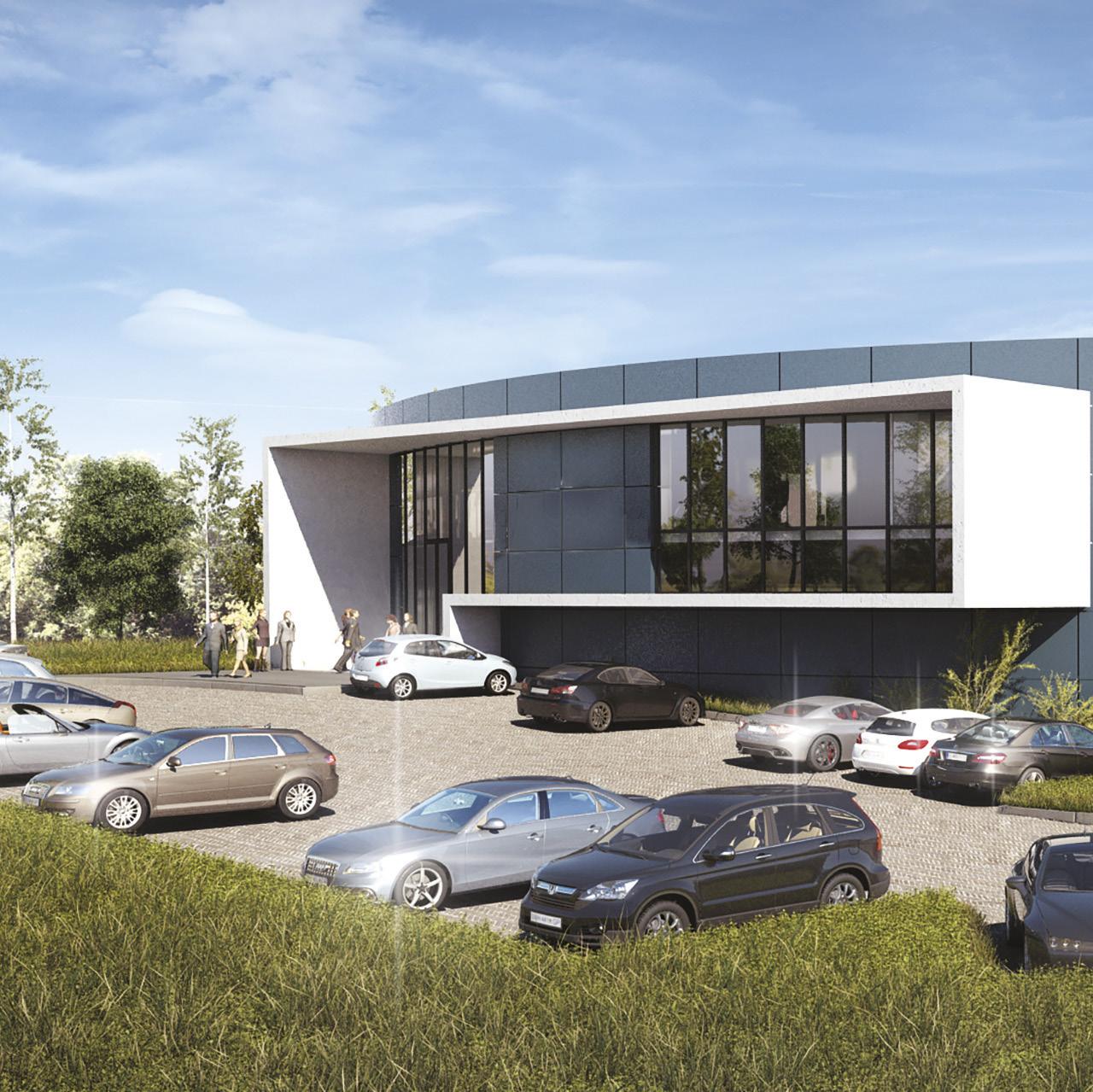in brief in the news By Glenda Williams
LISTED PROPERTY
Capitalising on e-commerce
f
Photos: Supplied
Industrial property is benefitting from declining in-store retailing and the huge growth in data consumption.
or the most part, industrial property (factories, logistics warehouses and distribution centres) has been the poor relation in the local property investment landscape. Even South Africa’s listed property and real estate investment trusts (Reit) sector has largely fixed its attention on retail and office assets. According to Bridge Fund Managers, on 31 July 2020 only 18.3% of the FTSE/JSE Listed Property Index (SAPY) comprised exposure to the industrial sector. Of that, 6.6% being traditional industrial (primarily manufacturing) and 11.7% logistics (warehouse storage and movement of goods). The FTSE/JSE REIT SA Index figure is somewhat higher at 23.5%, split between 5.7% Steven Brown traditional and 17.8% logistics. CEO of Fortress REIT Ironically, given lower exposure to the asset class, industrial property is cheaper to own and operate compared to other asset classes. “A lot of the costs are pushed to the tenant, and per square metre it is much cheaper to Redefine’s Atlantic Hills in the Western Cape, where build,” Steven Brown, CEO of Fortress one of Amazon Web Services’ REIT, tells finweek. availability zones is situated.. But the approach to the asset class has been upended by the Covid-19 pandemic, which has brought with it strong e-commerce and e-tailing tailwinds on the back of declining in-store retailing – advancing the gains the industrial sector has made in recent years due to retailers requiring more efficient supply chains and e-commerce. The pace of change is especially driving growth in logistics real estate, the backbone of e-commerce, with online retailers and even traditional retailers ramping up their logistics and supply chains. Many businesses are capitalising on the increased reliance on e-commerce. But e-commerce requires more than three times the logistics space of traditional brickand-mortar retail sales, according to Prologis research. “Retailers are now spending a lot more on online infrastructure, in order to give them the backbone to roll out an omni-channel experience for the customer,” says Brown. “Even smaller businesses are getting scale and rapidly building trust with the end consumer and that’s been an opportunity for our logistics real estate business.” Fortress is the largest logistics developer in SA, Clint Marais logistics accounting for one-third of its R30bn direct Western Cape regional head of Galetti property portfolio. By investing R1bn annually in new Corporate Real Estate logistics assets over the next five years, by 2025 Brown expects logistics to account for two-thirds of the portfolio. Industrial sector exposure constitutes 20% of Redefine Properties’ local portfolio, R13.7bn by value. And the Reit’s 12
finweek 27 August 2020
European logistics platform (in partnership with Panattoni, the biggest logistics developer in Europe), is expanding. For the six months ended 29 February, the value of these income-producing assets totalled €270.3m, with new developments in progress comprising €62.3m. Location, including proximity to ports, rail and urban metropoles, and high-end technology are key to logistics success. Robert Dobrzycki, CEO of Panattoni Europe, which is multiplying its logistics development roll-out, says that the next five years will be reshaped in terms of location and what is built. “E-commerce will continue to grow and become a much larger part of what logistics is offering its clients,” he says. Many international counters trading at, or at a premium to, net asset value (NAV) are logistic-focused Reits like Prologis, Segro and Warehouses De Pauw. SA only has one specialist logistics Reit listed on the JSE; Equites Property Fund. Its R15bn assets are situated in key logistics nodes in SA (58%) and the UK (42%). Industrial property also stands to benefit from the huge growth in data consumption. Redefine houses Amazon Web Services’ three availability zones in Cape Town; while SA’s largest Reit, Growthpoint Properties, is developing data centres for two large international operators in Midrand. Growthpoint’s local industrial portfolio (excluding V&A Waterfront) comprises 17.5% by value. It also has 31% exposure to industrial properties in Growthpoint Australia and some exposure in Poland and Romania through its 29.4% stake in Globalworth Real Estate Investments. “We have seen an encouraging increase in demand for industrial properties from various sectors,” Galetti Corporate Real Estate Western Cape regional head, Clint Marais, tells finweek, attributing this to the changing nature of retail and businesses focusing on manufacturing personal protection equipment. “Adding to the demand is the fluctuation of exports and the depreciation of the rand. Manufacturers are scaling up local production to mitigate the possibility of disrupted supply chains in future,” he says. Marais predicts a major uptake in recently-developed industrial nodes such as Midrand and Pomona in Gauteng; Riverhorse Valley in KwaZulu-Natal; and Bellville South, West Coast, Airport Industria and Epping in the Western Cape. “These areas are on the rise, and we predict a significant increase in industrial real estate development once stakeholders realise their profitability.” ■ editorial@finweek.co.za www.fin24.com/finweek






